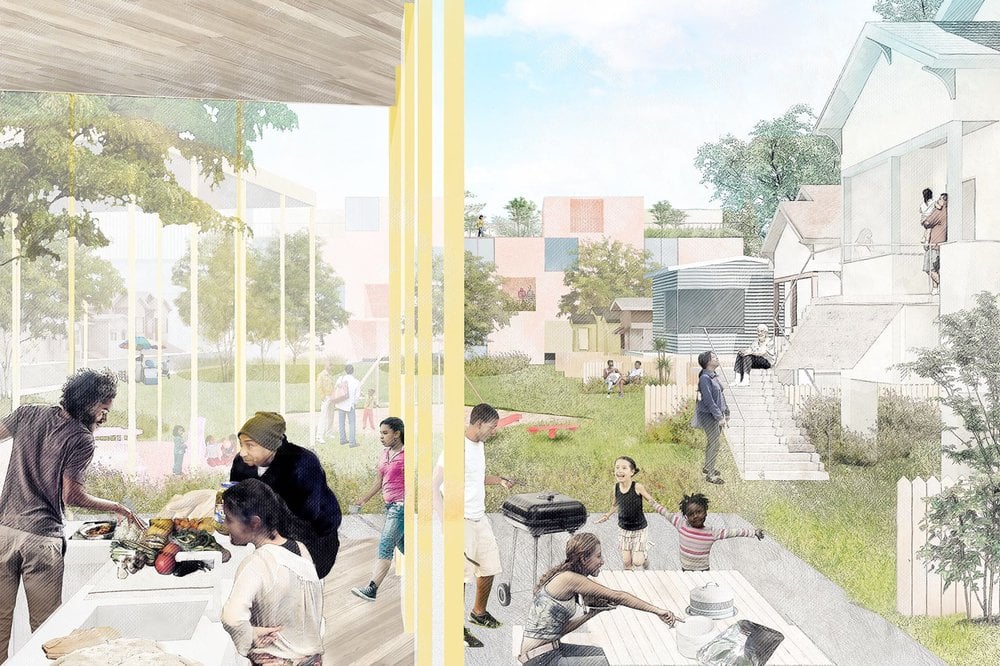Landscape design is not merely about creating aesthetically pleasing outdoor environments; it plays a crucial role in shaping communities, fostering social equity, and ensuring access to public spaces for all members of society. In this article, we will delve into the multifaceted role of landscape design in promoting social equity and inclusivity in public spaces.
**1. Universal Accessibility:
Landscape design can be tailored to ensure universal accessibility, accommodating individuals with disabilities and mobility challenges. Features like ramps, accessible pathways, and seating areas designed for various needs contribute to social equity by allowing everyone to enjoy public spaces.
**2. Inclusive Play Areas:
Well-designed parks and recreational areas include inclusive play equipment and facilities that cater to children with disabilities. This promotes social interaction and allows children of all abilities to play together, fostering inclusivity from an early age.
**3. Multifunctional Spaces:
Public spaces can be designed to serve multiple purposes, catering to a diverse range of activities and community needs. This versatility ensures that these spaces are welcoming and beneficial to a broad cross-section of the population.
**4. Cultural Sensitivity:
Landscape designers can incorporate elements that honor the cultural diversity of the community. This demonstrates respect for different cultural backgrounds and creates a sense of belonging for all residents.
**5. Community Engagement:
Engaging the community in the design process is essential for creating public spaces that truly reflect the needs and desires of the people who use them. Landscape designers can facilitate community input and collaboration to ensure that the spaces are inclusive and meet the community’s goals.
**6. Safe and Well-Lit Environments:
Safety is a paramount concern in public spaces. Proper lighting, clear sightlines, and well-maintained landscapes contribute to a sense of security, making these spaces more inviting for everyone, particularly at night.
**7. Affordable Amenities:
Inclusivity extends to affordability. Public spaces should offer affordable amenities such as seating, picnic areas, and recreational facilities, ensuring that these spaces are accessible to individuals regardless of their socioeconomic status.
**8. Promotion of Physical and Mental Well-being:
Accessible green spaces and parks provide opportunities for physical activity and relaxation, promoting physical and mental well-being for all community members.
**9. Environmental Sustainability:
Landscape design can incorporate sustainable practices that benefit the environment and the community. Features like rain gardens, green roofs, and urban forests contribute to cleaner air and water and enhance the overall quality of life in the community.
**10. Economic Development:
- Well-designed public spaces can spur economic development in surrounding areas. Increased foot traffic and community engagement can attract businesses, create jobs, and revitalize neighborhoods, benefiting residents of all backgrounds.
**11. Social Cohesion:
- Public spaces designed for community gatherings and events foster social cohesion. They provide opportunities for people from diverse backgrounds to come together, build relationships, and strengthen the social fabric of the community.
**12. Accessible Information and Wayfinding:
- Effective signage, maps, and information boards in public spaces ensure that everyone can navigate and make the most of these environments, regardless of language or literacy barriers.
**13. Environmental Justice:
- Landscape design can address environmental justice issues by ensuring that marginalized communities have equitable access to green spaces and the benefits they offer, such as improved air quality and reduced heat islands.
In conclusion, landscape design plays a pivotal role in promoting social equity and access to public spaces. By embracing principles of inclusivity, accessibility, cultural sensitivity, and community engagement, landscape architects and designers can create environments that empower communities and enhance the quality of life for all residents. These spaces become catalysts for positive social change, fostering unity, well-being, and a sense of belonging among diverse populations. As we move forward, it is essential to recognize the integral role that landscape design plays in building more equitable and inclusive communities.
